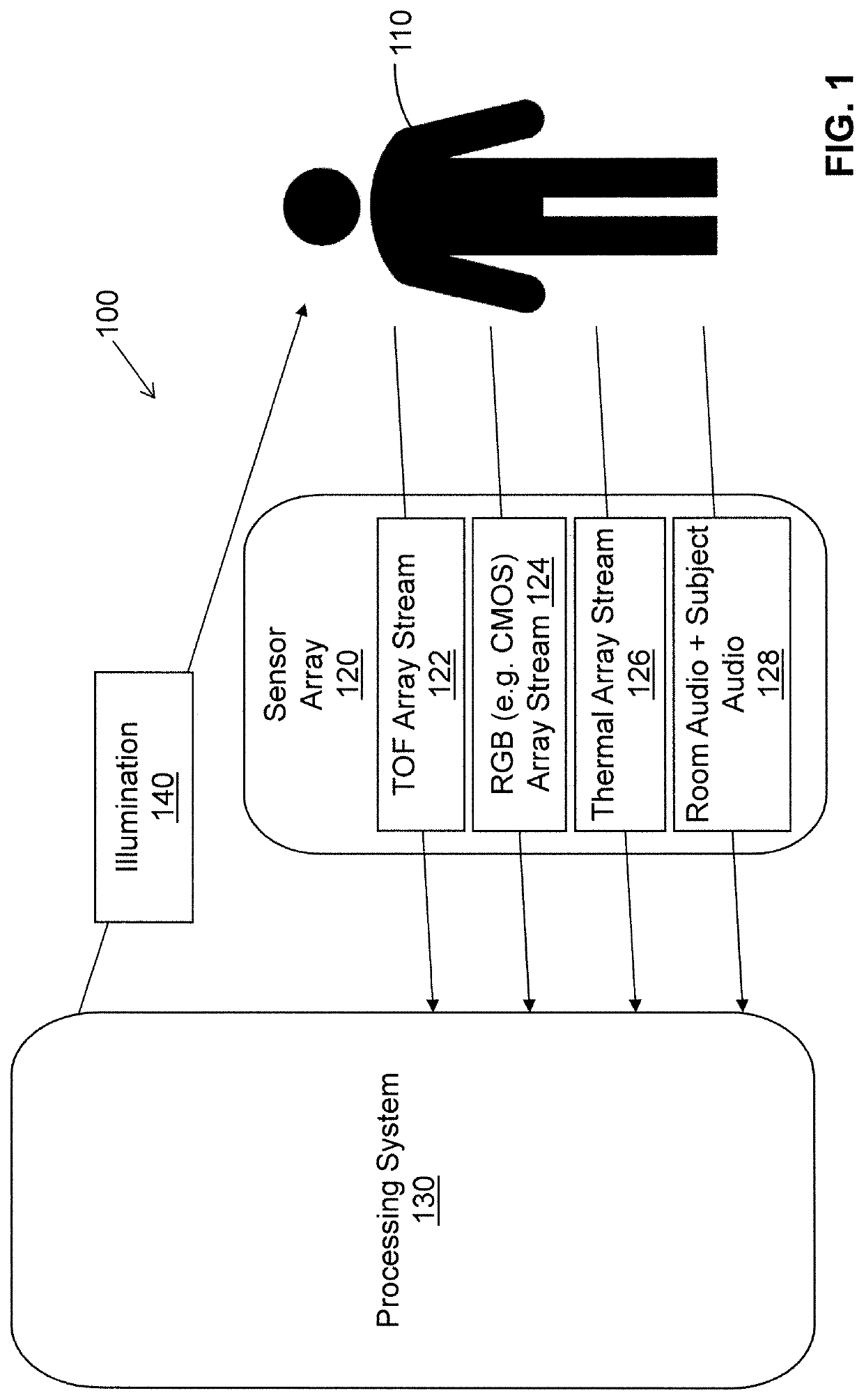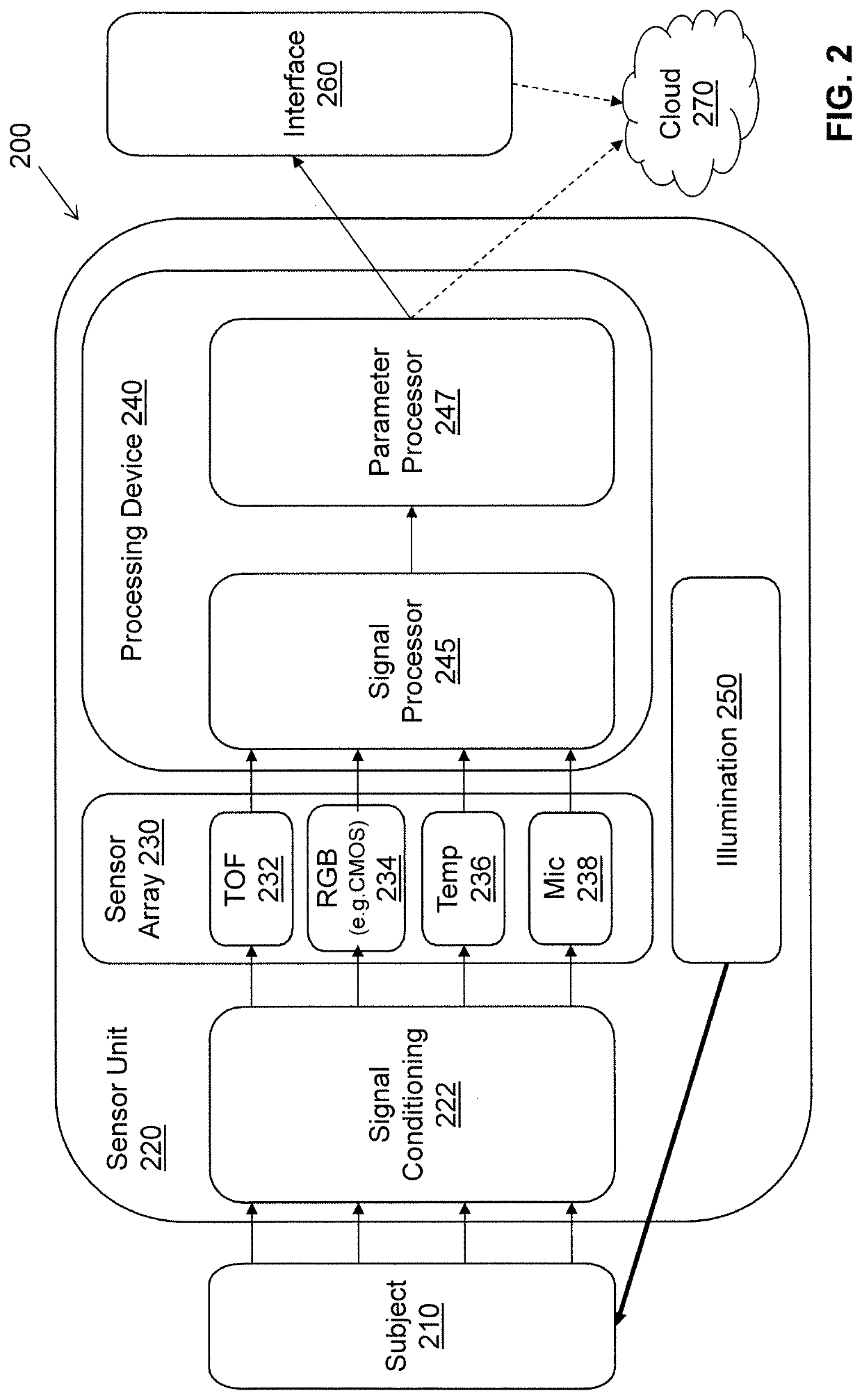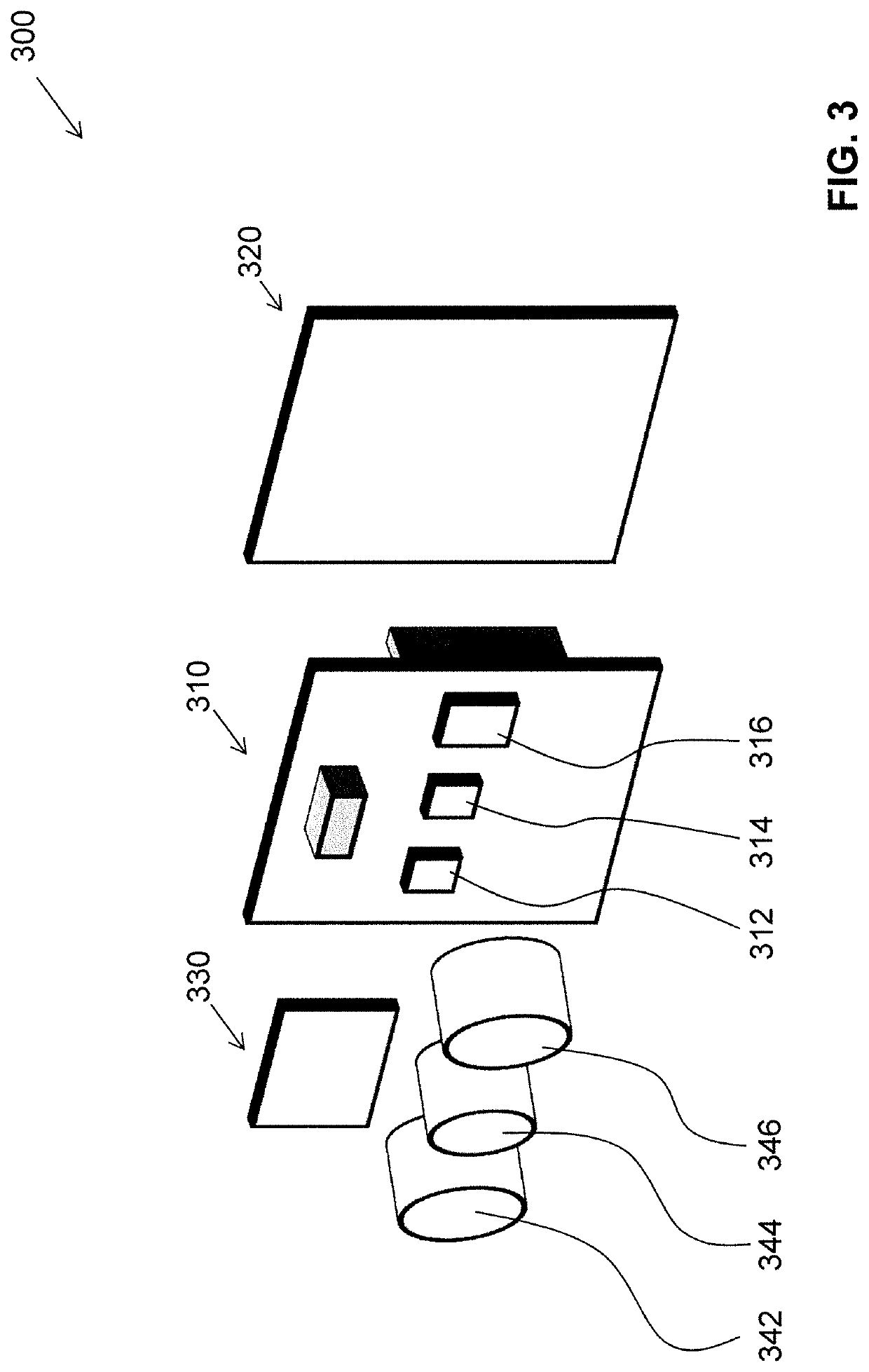Monitoring of Physiological Parameters
- Summary
- Abstract
- Description
- Claims
- Application Information
AI Technical Summary
Benefits of technology
Problems solved by technology
Method used
Image
Examples
Embodiment Construction
[0061]FIG. 1 is a block diagram depicting an example of physiological monitoring system 100 operating to monitor a subject 110. The subject 110 may be an adult in a hospital, a child in a crib or bed, or another subject to monitor. The physiological monitoring system 100 may include a sensor array 120 coupled to a processing system 130. In some embodiments, the sensor array 120 may also include illumination 140. The sensor array 120 may include a ToF array 122, a RGB (e.g. CMOS or CCD) array 124, a thermal array 126, and a microphone 128. In some implementations, the physiological monitoring system 100 may include fewer or additional components than are shown in FIG. 1. For example, some components of the physiological monitoring system 100 may be combined or divided compared to what is shown in FIG. 1. Furthermore, the physiological monitoring system 100 may include additional features such as communication systems, filtering systems, computation engines, additional memory systems,...
PUM
 Login to View More
Login to View More Abstract
Description
Claims
Application Information
 Login to View More
Login to View More - R&D
- Intellectual Property
- Life Sciences
- Materials
- Tech Scout
- Unparalleled Data Quality
- Higher Quality Content
- 60% Fewer Hallucinations
Browse by: Latest US Patents, China's latest patents, Technical Efficacy Thesaurus, Application Domain, Technology Topic, Popular Technical Reports.
© 2025 PatSnap. All rights reserved.Legal|Privacy policy|Modern Slavery Act Transparency Statement|Sitemap|About US| Contact US: help@patsnap.com



